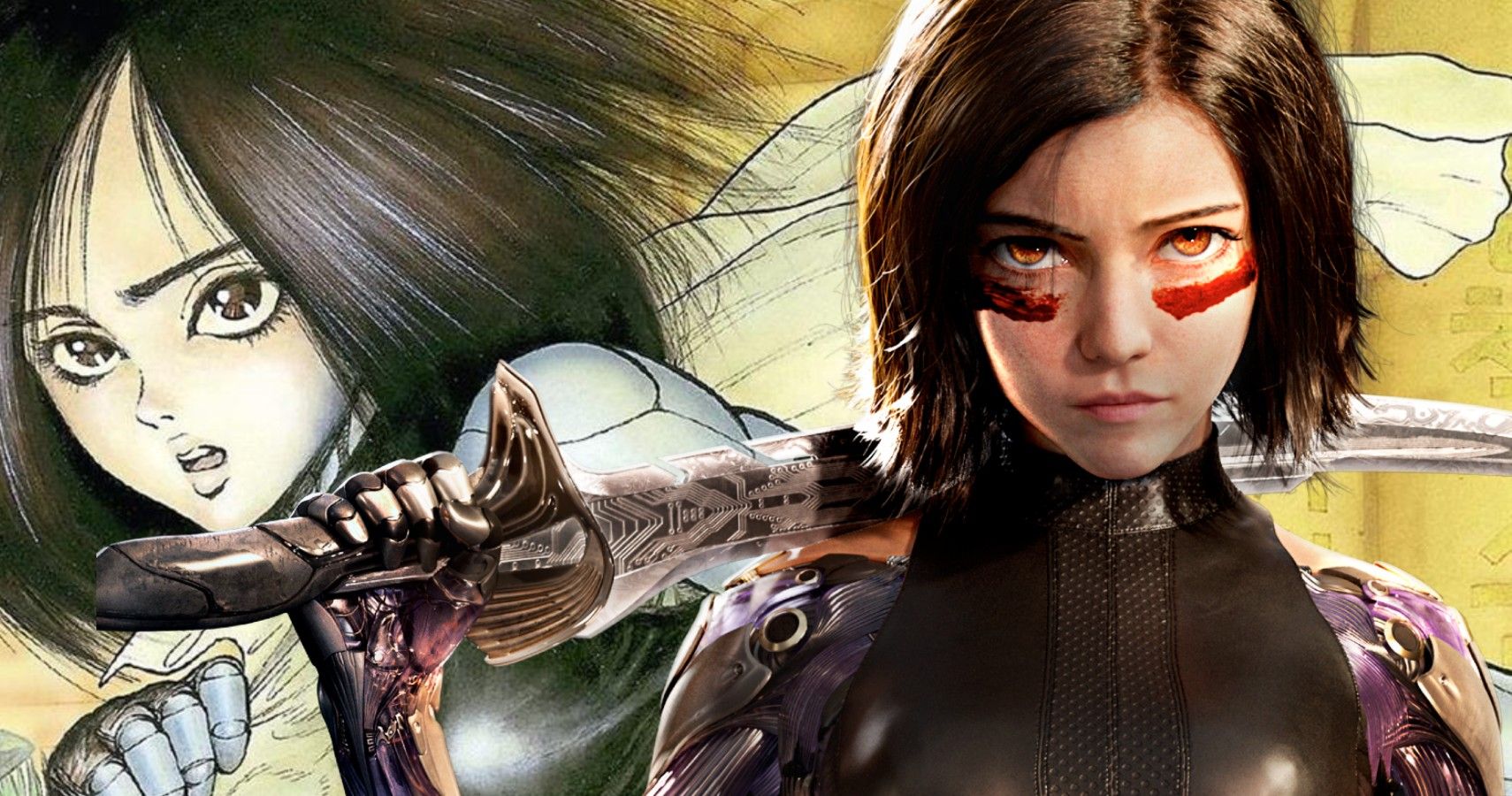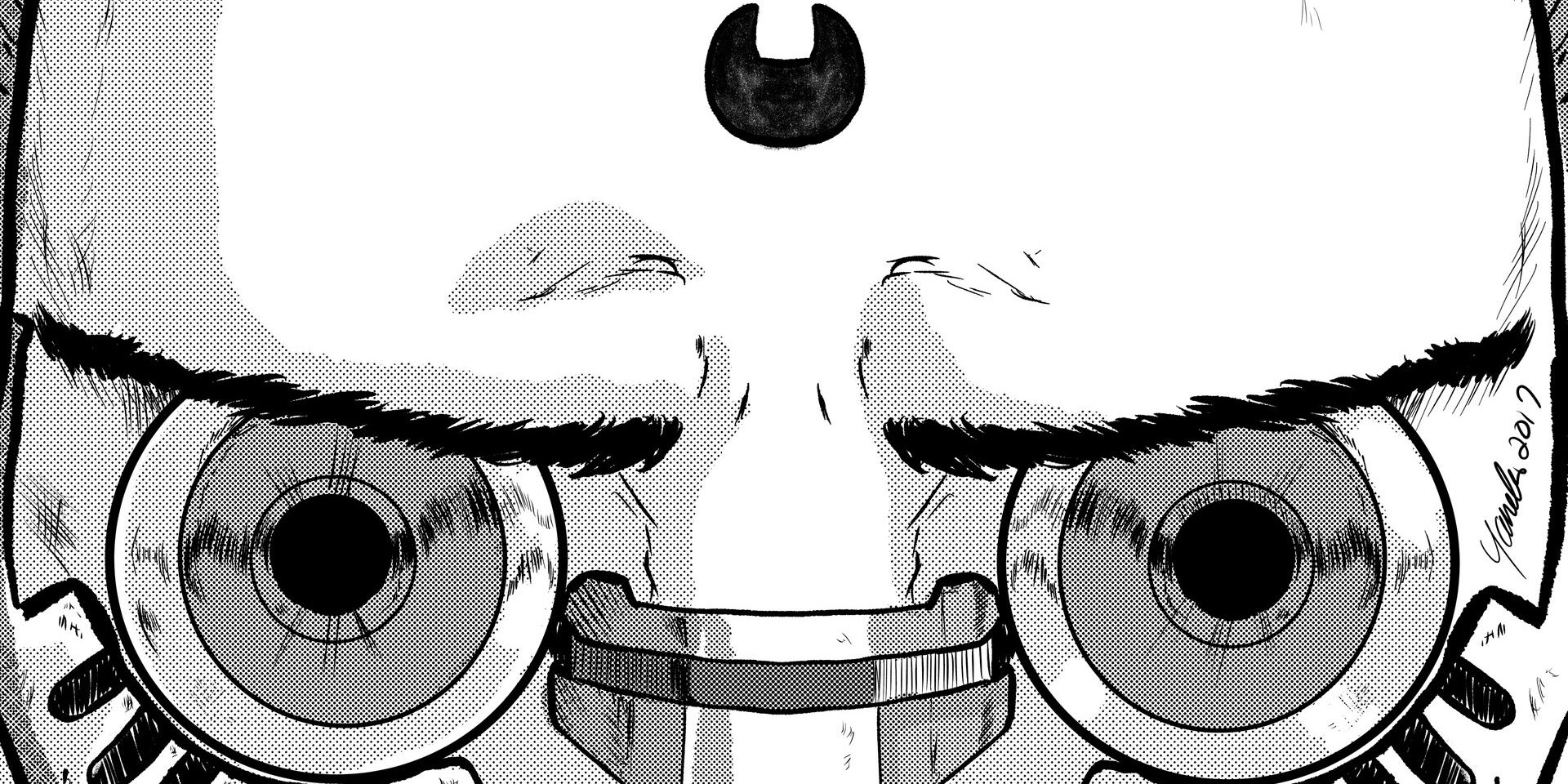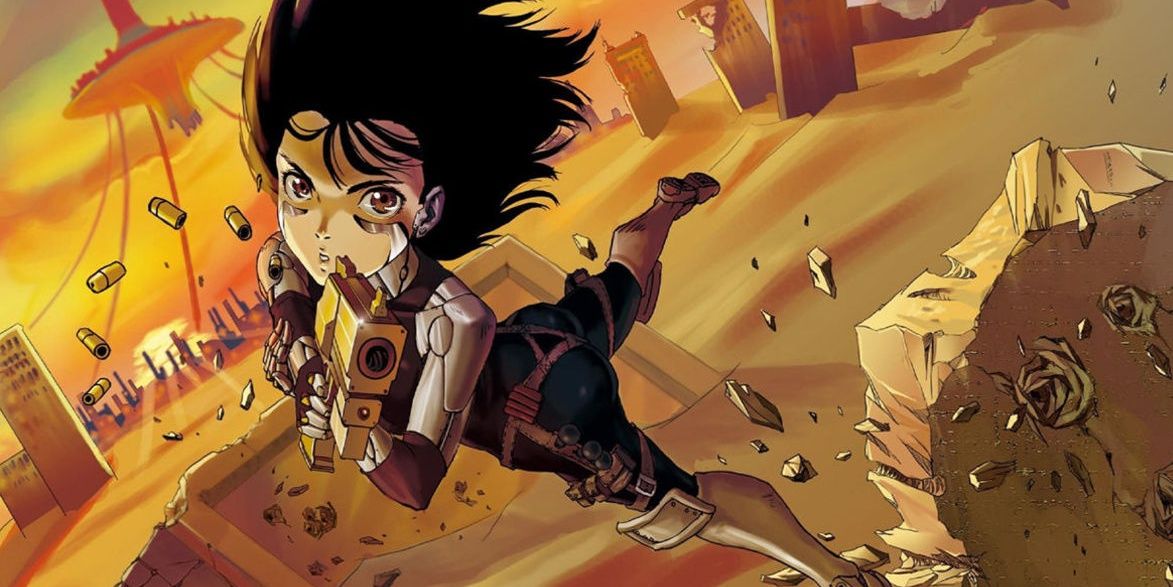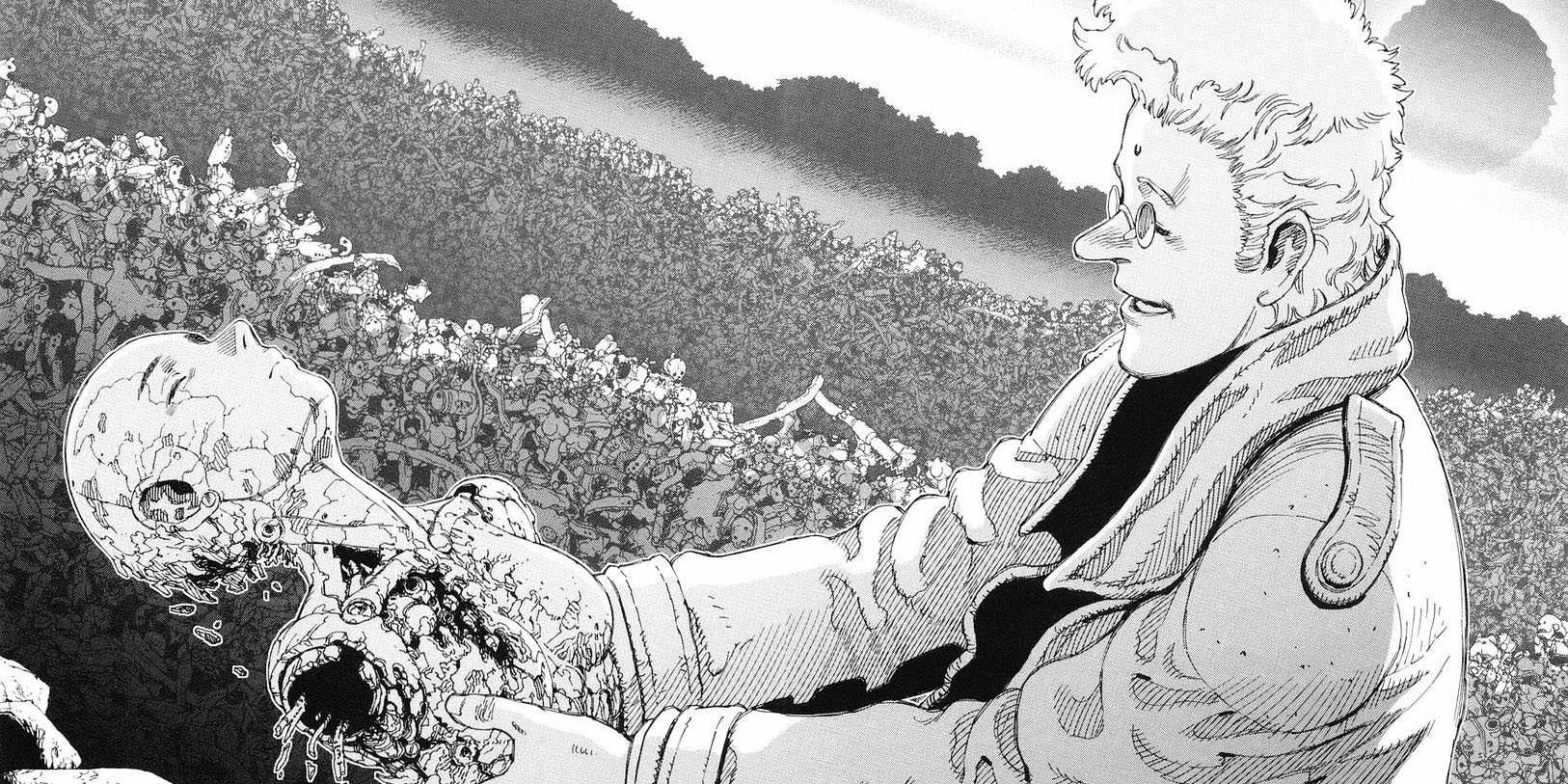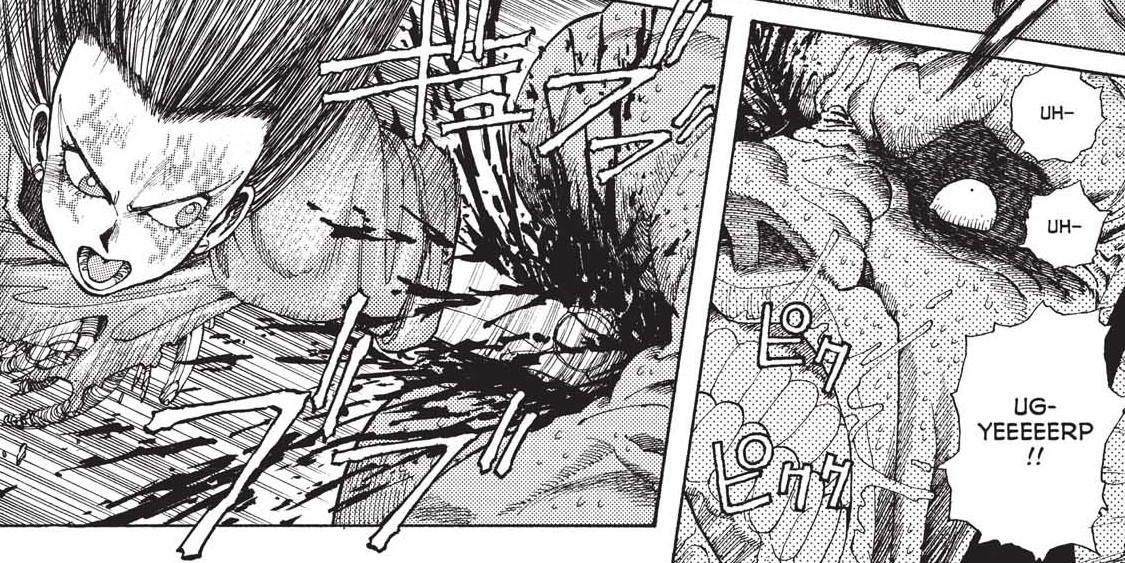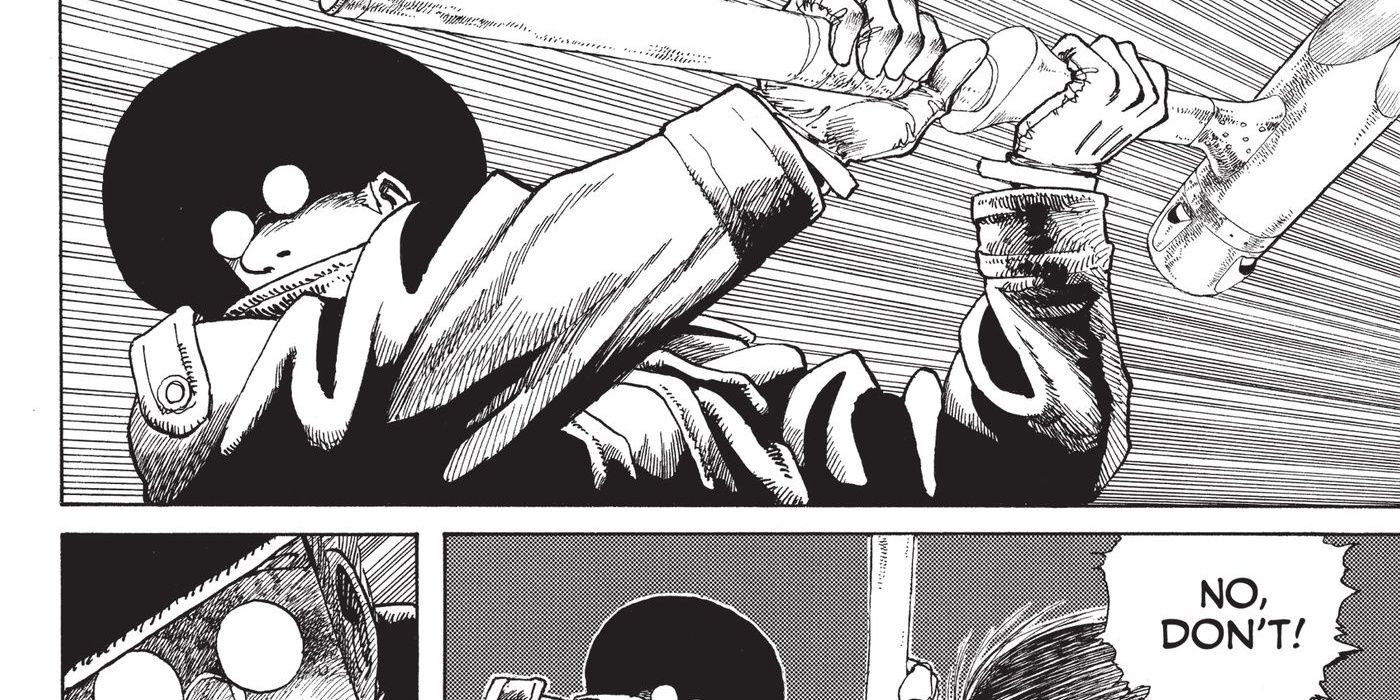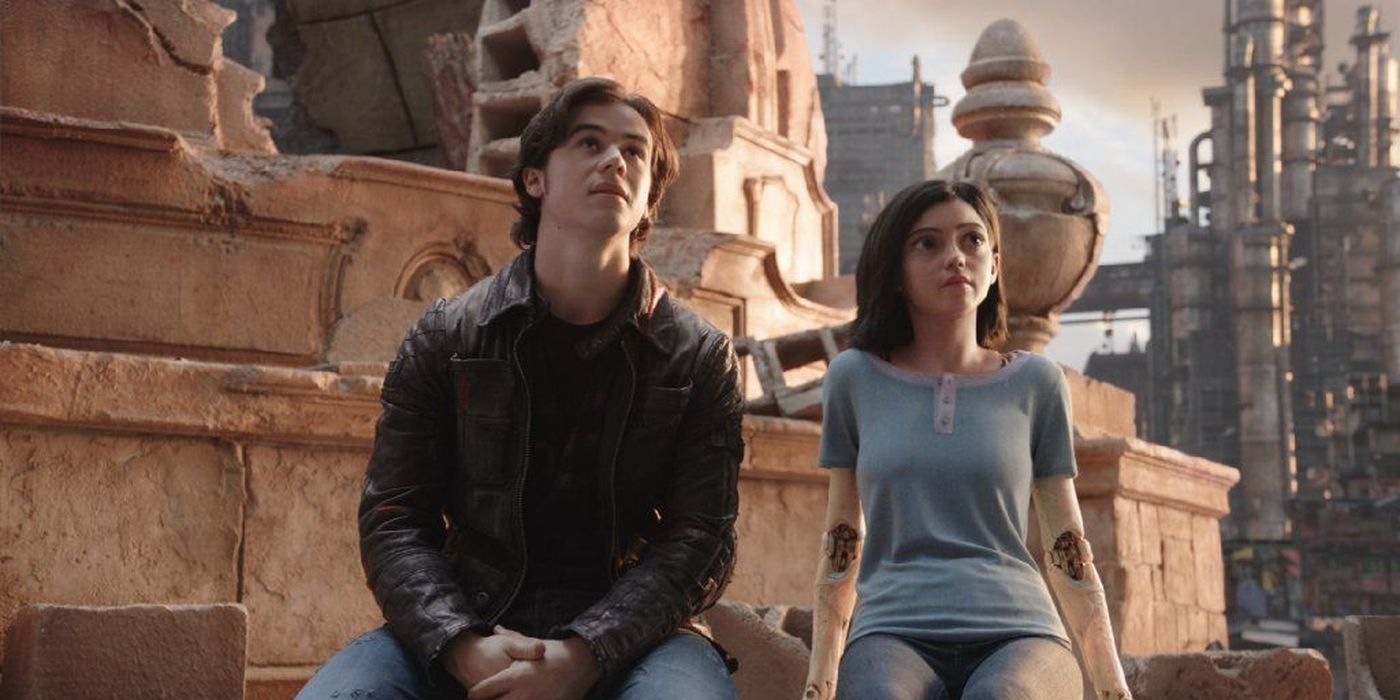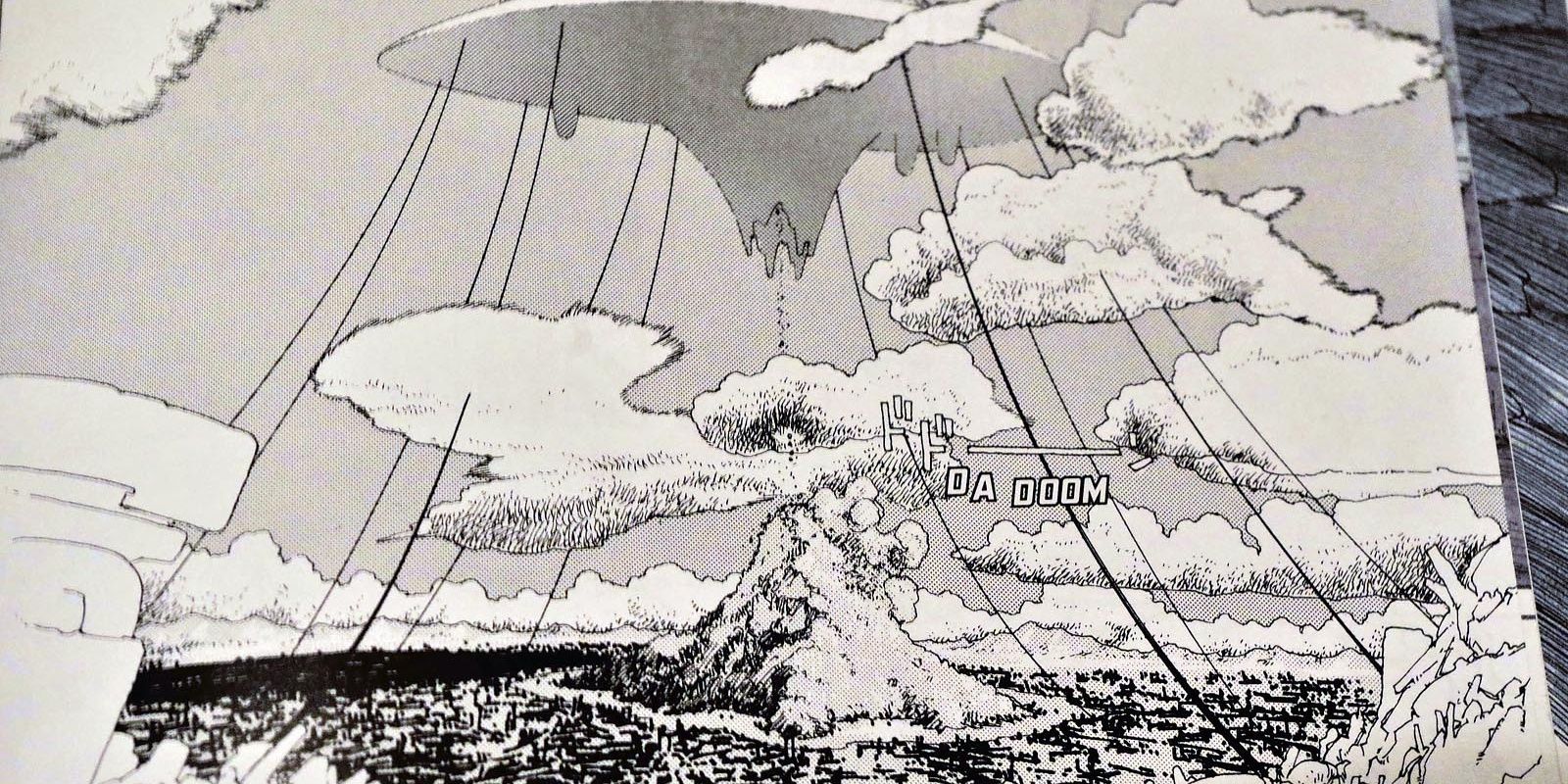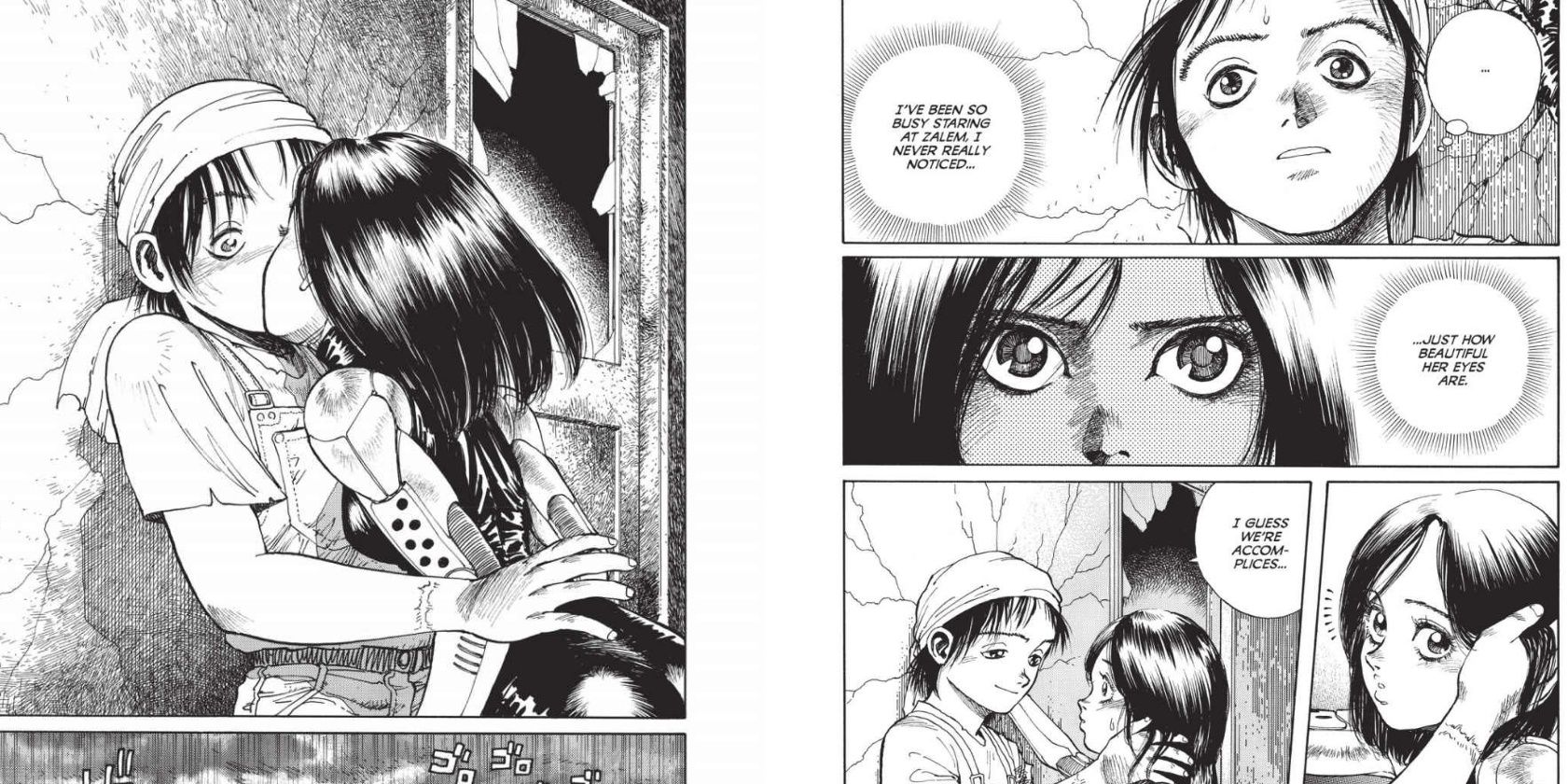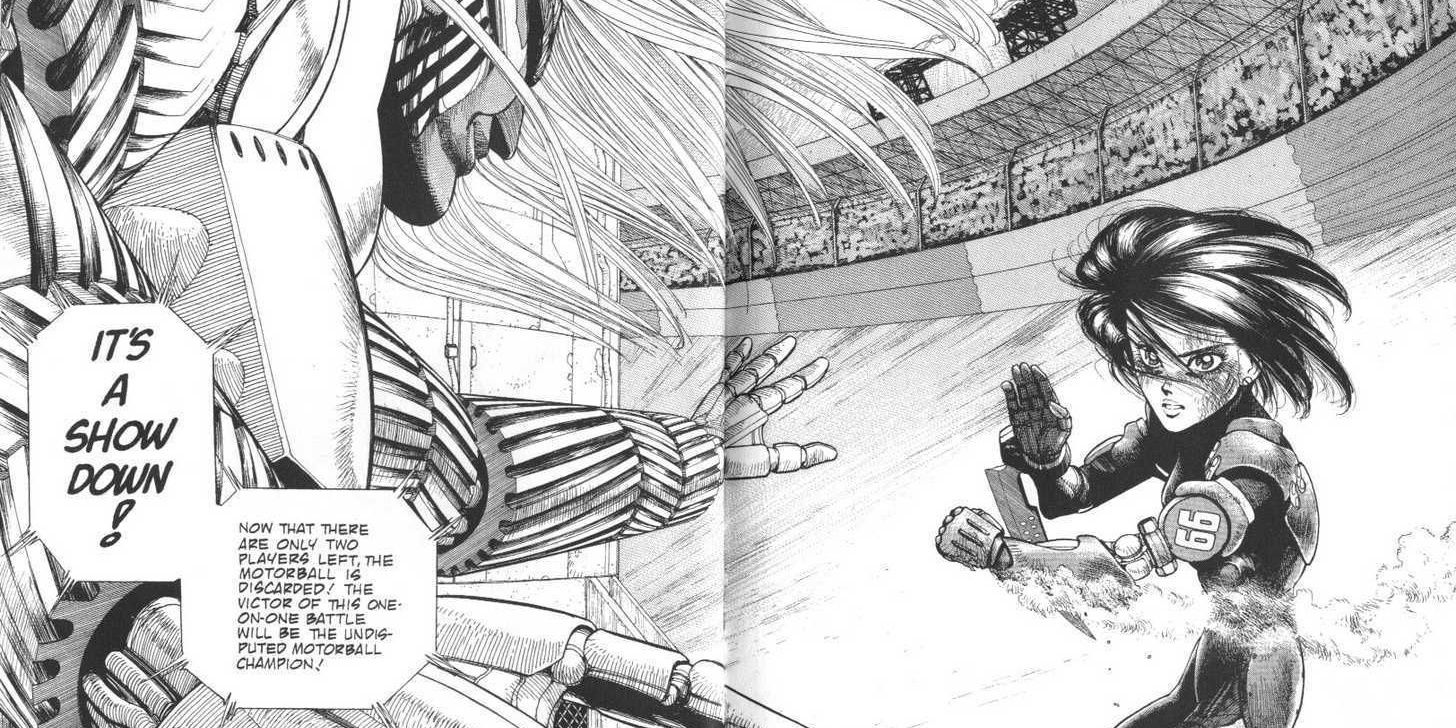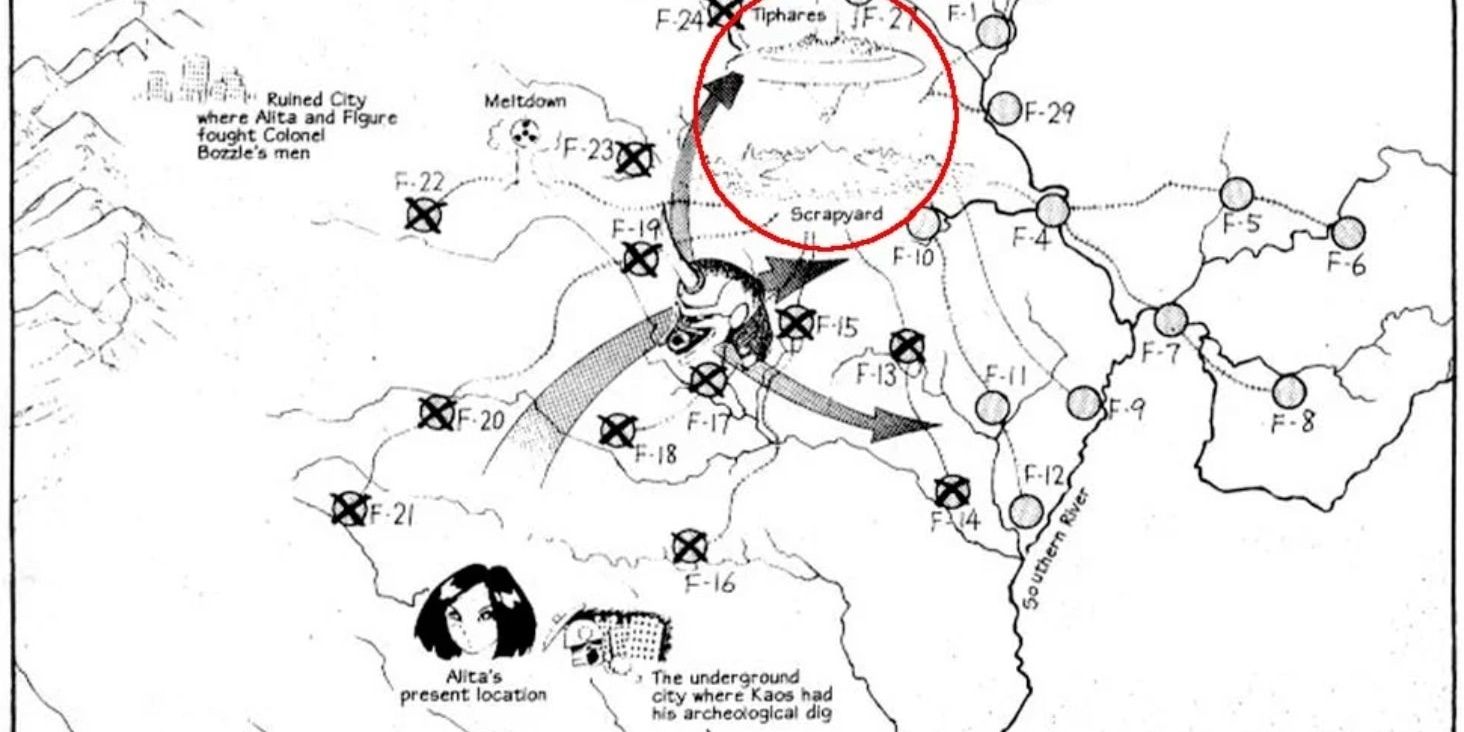Whenever an established, fan-favorite manga like Battle Angel Alita is adapted into a film, one of the first things people ask is how it will compare to the source material. This makes sense, seeing as most fans are very protective over what they see as "theirs." It's interesting to note how Alita: Battle Angel changed as it made the leap from the comic book pages to the big screen.
While Alita: Battle Angel certainly departed from the manga in a number of distinct ways, most fans will agree that the adjustments made sense, especially considering the limitations of a feature-length, live-action film. Although the film might not have been a commercial success, it has developed a strong cult following. A loud group of fans is clamoring for a sequel. Even if that sequel doesn't come, Alita: Battle Angel helped to inspire many to read the manga for the first time. Here are 10 major differences between Alita: Battle Angel and the manga that it was based on.
10 Desty Nova Is Absolutely Insane In The Manga
Although Edward Norton only makes a minor cameo as Desty Nova, his character plays a big part in the story. The cliffhanger seems to suggest that he's going to be the major antagonist in the later sequels.
In the manga, Desty Nova is a more central figure almost from the very beginning, and readers see him in much more detail. Not only that, but Nova is much more unstable and insane in the manga. While his movie version seems calm and calculated, the manga depicts him as a madman in the truest sense of the word.
9 The Manga Seems To Go On Forever
One of the biggest differences between the manga and the movie is the passage of time. In the manga, years go by before key events happen in the movie. Not only that, but the manga seems to continue on forever. In fact, there are still new volumes being released to this day with stories set eons after the original.
Obviously, the movie version speeds up the passage of time considerably, and only a few weeks go by before major events start to pull Alita and the other main characters in the climax of the film.
8 Alita Is Named After Ido's Cat, Not His Daughter
Alita's name is also an example of how the manga and the film don't quite match up. In the movie, Ido names his new cyborg friend after his daughter, who passed away earlier. Some fans have noted that this was kind of creepy.
In the manga, Ido names Alita in a much more casual, innocent manner - he names her after his cat. Perhaps the film decided to change this in order to create more drama and flesh out Ido's backstory, but it came along with some unintentional implications.
7 The Manga Is Much Darker
When Alita: Battle Angel released, many fans were surprised to see that it was given a rating of PG-13. After all, the manga is famous for its dark, disturbing themes.
Aside from the grim vision of humanity's future, there are scenes of extreme, chilling gore. The mere concept of people merging with machines is enough to make many readers squirm, especially when people are forced to have body parts replaced against their will.
6 Ido Is A Brutal Killer In The Manga
In the movie, Ido is portrayed as a lovable, honest father figure. He does his best to protect Alita, but in most cases, Alita is the one saving Ido's neck. He also tries to catch vicious murderers who are harvesting body parts from innocent people.
In the manga, Ido is a much darker, more complex character. Over the course of the manga, it is revealed that he actually enjoys killing. He is also a seriously skilled fighter, and he doesn't really need Alita's help. Perhaps most notably, Ido was the one harvesting body parts from innocent people in the manga.
5 Hugo Is A Much Less Likable Criminal In The Manga
Hugo is another character that went through some serious changes when the manga was adapted to the big screen. Like Ido, Hugo is portrayed as a naive, innocent character who simply gets caught up in a life of crime.
In the manga, his actions are much less forgivable. Instead of harvesting parts from people, he harvests their spinal columns (one of the rarest commodities in Zalem/Scrapyard). Even though his story is still quite tragic, he's a much less likable character in the manga.
4 No One Can Go To Zalem In The Manga - Even Motorball Winners
The "glue" holding the movie together is the goal of reaching Zalem. The audience is teased throughout the movie about what might be waiting up in the sky city, and it's clear that one of the last vestiges for most people in Scrapyard is the slim chance of one day earning their place in this Utopia.
However, the manga is quite clear about the chances of reaching Zalem: they're non-existent. No one can go to Zalem - whether they're a Motorball winner or a former resident of the city who was kicked out.
3 There Wasn't Much Of A Romance Between Alita & Hugo
Another central part of the movie's plot was the romance between Alita and Hugo. Their connection is established very early, and it plays a major role in how things turn out in the end.
In the manga, this romance is much less overt and obvious. In fact, many fans have referred to Hugo as an "idiot" because he never realizes how much Alita cares about him until it's too late. She makes all of the moves in the manga, and Hugo is typically too distracted by Zalem to really appreciate the romance.
2 Alita Abandons Her Berserker Body When She Starts Playing Motorball
When Alita finally gets connected to her Berserker body, it's a huge moment in the film. From that point on, she's well-equipped to take on a range of enemies, and she becomes almost unstoppable.
In the manga, the Berserker body plays a major role as well - it's just not quite as important. It's still a very powerful weapon, but Alita quickly discards this Martian relic when she starts playing Motorball. This is because she uses a body specifically geared towards the sport, which includes various upgrades and bladed weapons.
1 Zalem Was Originally Found In Kansas
Another interesting change is the actual location of Zalem. In the film, it's heavily suggested that they cities are in a Latin American location - probably Panama City. Meanwhile in the manga, it's made evident that the bright and lively Zalem (and Scrapyard below it, of course) is in Kansas City, Missouri. Reportedly, this change was made by producer James Cameron because Zalem's - a city connected to a planetary elevator that passes the equator - location would be more accurate if it were in Latin America.
It's a little detail that doesn't really change the story, but fans of the manga will know that many of the story's locations are intended to be futuristic, post-apocalyptic visions of today's America. In the movie, the local architecture instead resembles futuristic versions of colonial-era Spanish buildings. Kansas, however, gets a shot-out by being the name of the Hunter-Warrior bar that Alita drops by.

